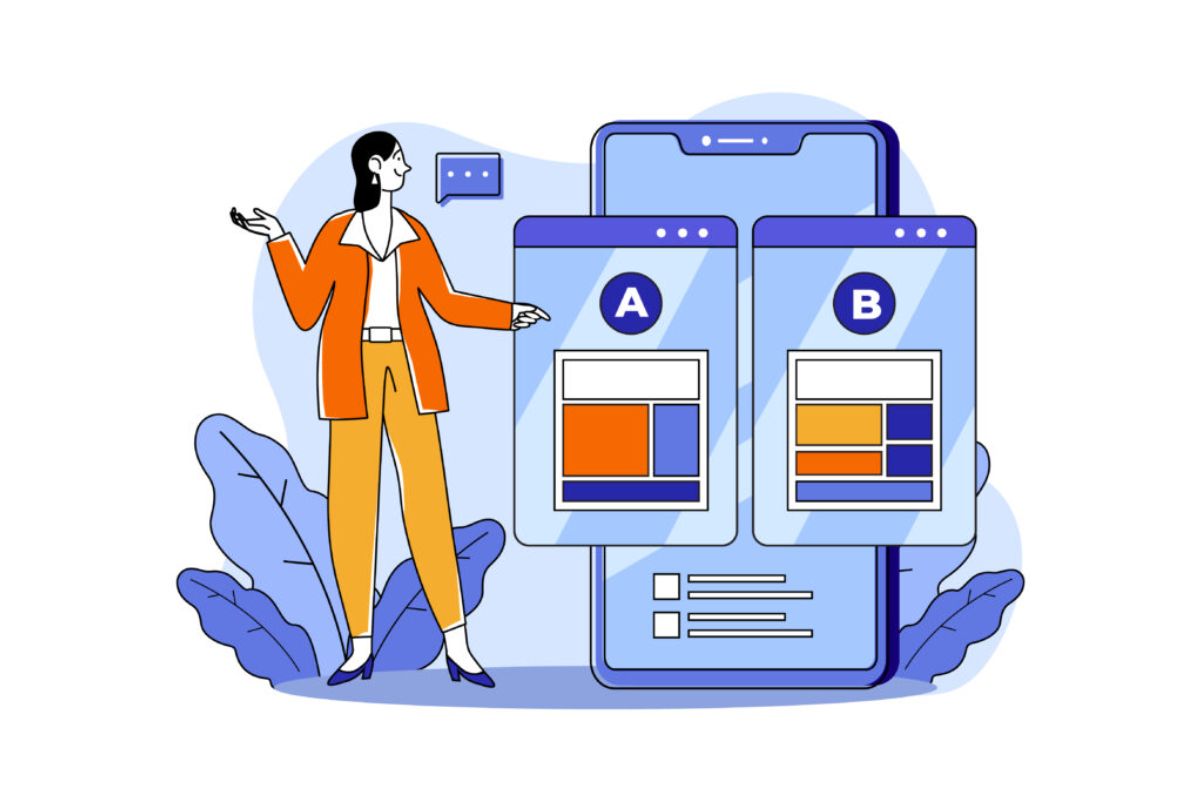Hey there, curious minds! Ever wonder how your favorite websites and apps manage to keep you engaged and satisfied? Well, it’s not magic; it’s a little something called A/B testing. Today, we’re going to unravel the mystery behind this powerful tool that helps businesses refine and perfect their online presence.
So, grab your favorite beverage, settle into your comfiest chair, and let’s dive into the fascinating world of A/B testing!
What is A/B Testing?
Let’s start with the basics. A/B testing, also known as split testing, is a method used by businesses and marketers to compare two versions of a webpage, email, or app feature to determine which one performs better. The process involves splitting your audience into two groups (Group A and Group B) and exposing each group to a different version of your content or design.
The ultimate goal? To figure out which version, A or B, yields more favorable results—whether that’s higher conversion rates, increased user engagement, or better overall performance.
How Does A/B Testing Work?
Imagine you run an online store and want to optimize your product page to boost sales. You decide to A/B test the product description. Here’s how it works:
- Identify the Variable: In this case, the variable is the product description. Version A might be the current description, while Version B is a revised version with tweaks or changes.
- Randomly Assign Groups: Your website visitors are randomly divided into two groups, with each group seeing one of the two versions. Group A sees the original product description (Version A), while Group B sees the revised product description (Version B).
- Gather Data: As visitors interact with your site, data is collected on their behavior—how long they stay on the page, whether they make a purchase, and so on.
- Compare Results: After a sufficient amount of data is collected, you analyze the results. If Version B outperforms Version A, you might conclude that the changes in the product description contributed to the improved performance.
- Implement Changes: Armed with insights from your A/B test, you can confidently implement the changes that led to better results, optimizing your website for improved performance.
Real-World A/B Testing Examples
Let’s explore a few real-world examples to illustrate the power and versatility of A/B testing:
- Call-to-Action (CTA) Buttons:
- Variable: Color of the CTA button.
- Versions: Group A sees a green button (Version A), while Group B sees a red button (Version B).
- Results: If the red button leads to more conversions, you might consider updating all your CTA buttons to red.
- Email Subject Lines:
- Variable: Email subject lines.
- Versions: Group A receives an email with Subject Line A, while Group B receives the same email with Subject Line B.
- Results: Analyzing open rates and click-through rates can help you determine which subject line is more effective.
- Website Headlines:
- Variable: Headline on the homepage.
- Versions: Group A experiences the current headline (Version A), while Group B sees a revised headline (Version B).
- Results: If the revised headline leads to more engagement or longer time spent on the site, you might consider updating the homepage for all users.
Benefits of A/B Testing
Now that we have a clear understanding of what A/B testing is and how it works, let’s see why businesses and marketers swear by this method:
Data-Driven Decision Making:
- A/B testing provides concrete data and insights, allowing businesses to make informed decisions based on user behavior rather than relying on assumptions or gut feelings.
Continuous Improvement:
- It fosters a culture of continuous improvement by encouraging businesses to iterate and refine their strategies, leading to long-term success in an ever-evolving digital landscape.
Optimized User Experience:
- By identifying what resonates most with users, businesses can tailor their content and design to create a more personalized and enjoyable experience, ultimately increasing user satisfaction.
Increased Conversion Rates:
- A/B testing enables businesses to fine-tune elements that directly impact conversion rates, such as CTAs, product descriptions, and checkout processes, resulting in improved overall performance.
Cost-Effective Marketing:
- Instead of making sweeping changes based on assumptions, A/B testing allows businesses to allocate resources more efficiently by focusing on strategies that have proven to be effective through data analysis.
Common A/B Testing Pitfalls to Avoid
While A/B testing is a powerful tool, it’s crucial to approach it with care and avoid common pitfalls that could undermine its effectiveness:
Insufficient Sample Size:
- Drawing conclusions from a small sample size can lead to inaccurate results. Ensure your test group is large enough to produce statistically significant data. If you have a low traffic site, check out tips for A/B testing here.
Biased Samples:
- Randomly assigning users to groups helps mitigate bias. Avoid cherry-picking users for specific versions, as this can skew results.
Overlooking Segmentation:
- Users have diverse preferences. Segment your audience based on relevant factors (e.g., demographics, location) to uncover insights that may be overlooked in a broader analysis.
Ignoring Long-Term Effects:
- Some changes may have a delayed impact. Don’t focus solely on immediate results; consider the long-term effects of your alterations.
Failing to Test Holistically:
- A/B testing is most effective when examining individual elements in isolation. Avoid testing multiple variables simultaneously, as this can cloud your understanding of what led to specific outcomes.
Conclusion
Congratulations, you’ve made it to the end of our A/B testing adventure! We’ve uncovered the mysteries behind this data-driven strategy, exploring how businesses use it to fine-tune their online presence for optimal performance.
As you embark on your own A/B testing journey, remember that curiosity is your best companion. Embrace the opportunity to learn from your users, iterate on your strategies, and watch your online success story unfold.
So, here’s to A/B testing—may your experiments be fruitful, your insights be enlightening, and your digital presence be nothing short of extraordinary! Cheers to unlocking the power of optimization!






